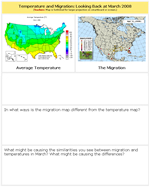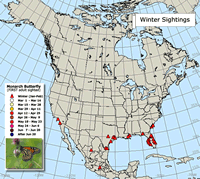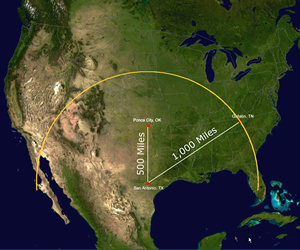Your Sightings! >>
Today's Report Includes:
- The Migration: Maps, Questions and Highlights
- Slideshow: Do you know a monarch when you see one?
- Challenge Question #9: Did These Observers See Monarchs?

Dr.
Lincoln Brower, Sweet Briar College
Monarch Mystery Photo >>
|
|

|
|
|
Map Questions >> |
| Highlights: Stalled to the North, Expanding to the East | ||||
This is a fascinating time of the migration. Notice how far east the monarchs have gone and how little they have moved to the north. If we measure from a central point in Texas (San Antonio), the monarchs have flown 1,000 miles to the east and only 500 miles to the north. They'd be in South Dakota by now had they gone straight north. Yet, for nearly two weeks, the northernmost monarch on our map has not surpassed the Oklahoma sighting at latitude 37 N. Meanwhile, the monarchs have jumped eastward — across Arkansas, Mississippi, Alabama, Georgia and Tennessee where on Monday....
Monarchs were also reported this week from North and South Carolina. Did those monarchs came up from Mexico? Biologist Billy McCord tagged monarchs on the South Carolina coast this winter. His results suggest that some monarchs survived all winter along the coast.
|
||||
| Make Room on Your Map: More Are Monarchs Coming Soon! | ||||
New butterflies of the next generation are about to be born! The monarchs that entered Texas and began laying eggs the week of March 15th had spread across the state within a week. (See map below.) Eggs collected on March 21st by Carol Cullar in Eagle Pass hatched on the 24th and began going into the chrysalis stage on April 6th. According to her prediction, these new monarchs should appear by April 15th. Temperatures have been mild and the full cycle should take only 26 or 27 days. "We've had mild weather with temps mostly in the 80s," she explains. |
||||
|
Every spring and fall we rely on hundreds of observers to track the monarch's migration. These observers expand the eyes and ears of scientists in ways not possible before the Internet. But their observations must be accurate in order for the data to be valid and useful. Remember: Our migration maps are only as accurate as the people who report observations.
Can you identify a monarch from its look-alikes? Please practice! >>
This week, read some of the real, questionable observations that have been reported to Journey North.
Challenge Question #9:
- Do you think these observers saw monarchs? Decide whether these sightings should be included on the migration map. Give reasons for your decisions. >>
- Answer to last week's Challenge Question #8 >>
- Slideshow: Do You Know a Monarch When You See One?
- Identification: Look, Measure, Draw, Describe
- Citizen Science and Journey North: Thinking Carefully About Methods
- You're the Scientist: Verifying Data Collected by Peers
- Overview: About the Monarch Butterfly Spring Migration >>
- Writing: Keep a Spring Monarch Butterfly Migration Journal >>
- Mapping—Key Lessons & Resources: Making, Reading and Interpreting Maps >>
- Monarchs for Kids (booklets, photos, videos) >>
The Next Monarch Migration Update Will Be Posted on April 17, 2008.







